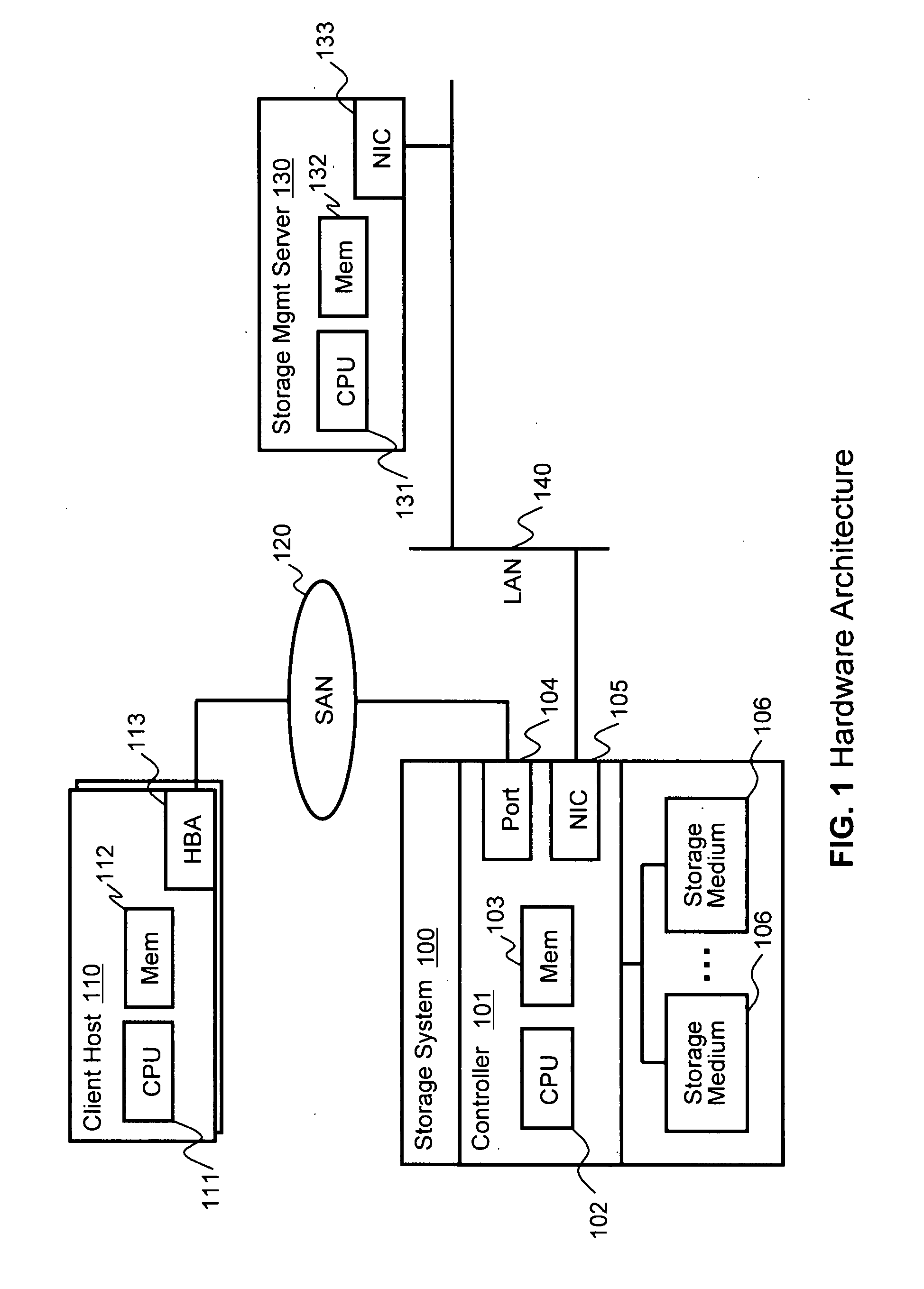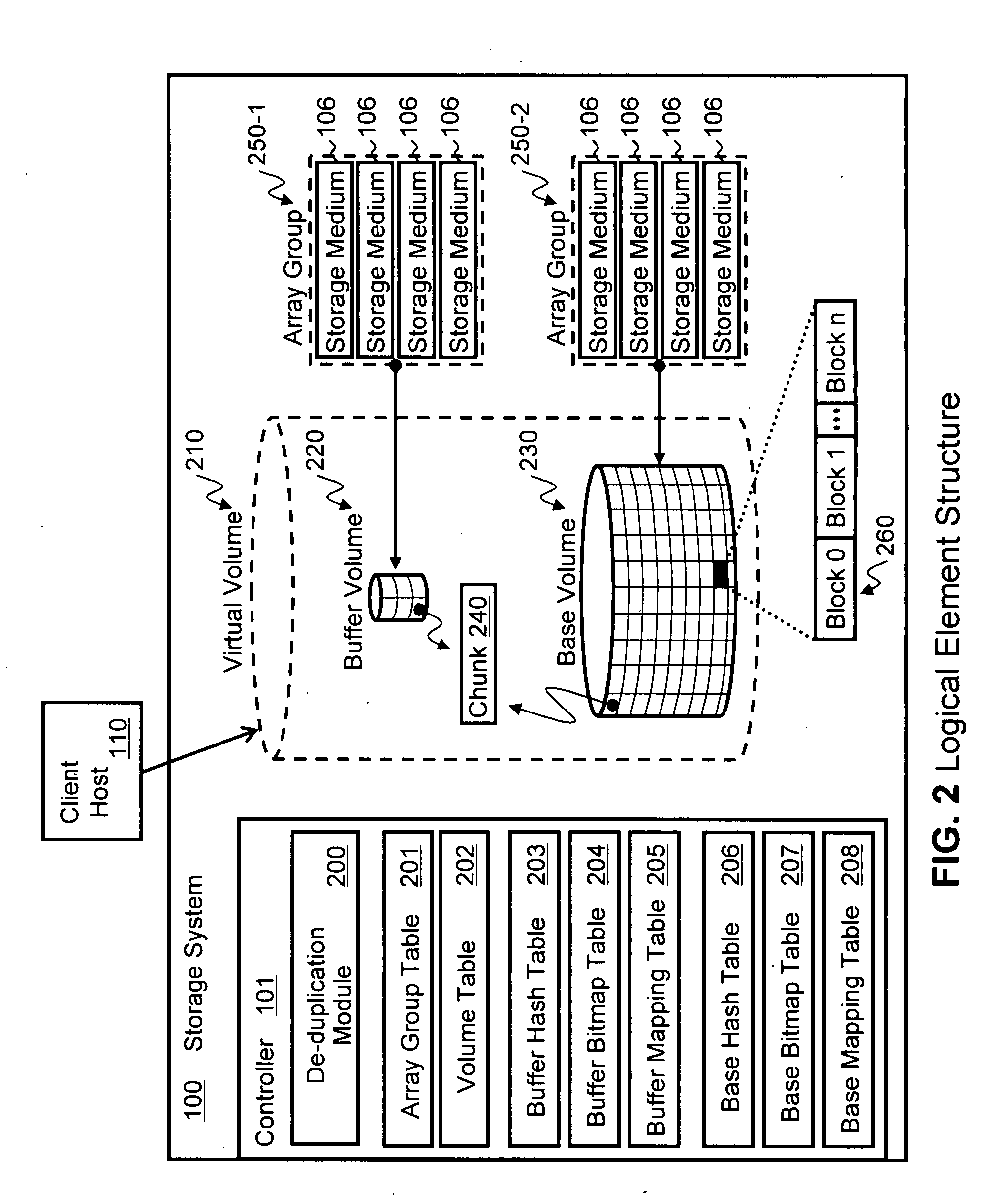Power efficient storage with data de-duplication
a data and storage technology, applied in the field of power efficient storage, can solve the problems of datacenter power consumption, data center power consumption may not be sufficient, and the power consumption required for storing data has also been increasing
- Summary
- Abstract
- Description
- Claims
- Application Information
AI Technical Summary
Problems solved by technology
Method used
Image
Examples
first embodiments
ture
[0032]FIG. 1 illustrates an example of a physical hardware architecture of an information system of the first embodiments. The information system of these embodiments consists of a storage system 100, one or more client hosts 110 and a storage management server 130. Client hosts 110 and storage system 100 are connected for communication through a SAN 120 (Storage Area Network). Further, while a SAN is illustrated, the connection could be any of a variety of types of connections, such as a local area network (LAN), wide area network (WAN), direct connection, or the like. Also storage management server 130 and storage system 100 are connected for communication through a LAN 140, which also could be any alternative connection type.
[0033]Storage system 100 includes a controller 101 for controlling access to a plurality of storage devices, such as storage mediums 106. Controller 101 includes a CPU 102, a memory 103, a port 104 for connecting with SAN 120 and a network interface (NIC)...
second embodiments
[0109]In the first embodiments set forth above, the process for flushing buffered chunks from the buffer volume is triggered explicitly by the decision of the storage administrator or by some other triggering event, such as the passage of a predetermined period of time, the buffer volume reaching a predetermined size limit, or other such event. In the second embodiment described below, the buffer volume is flushed automatically whenever the process of reading data from the base volume is initiated, which may not occur very frequently in certain storage system environments. When any data read operation against the base volume takes place, the storage controller needs to turn on the base volume. Because the spin up of disk drives is the time during which proportionately the largest amount of power is required, it is desirable to not repeat turning on and off the disk arrays. Thus, this is also an efficient time to perform the buffer volume flush process, since energy has already been ...
third embodiments
[0115]In the third embodiments, as illustrated in FIG. 13, a plurality of base volumes 230-1, 230-2 . . . 230-N are provided, each on a separate array group 250-1, 250-2 . . . 250-N. These embodiments might be applicable, for example, in a situation in which the number of stored chunks has become larger and larger, so that a plurality of base volumes might be needed to handle a huge amount of stored chunks. In a situation in which the base volume is very large, requiring a large number of storage devices, it is not power efficient to turn on the base volume during the flush and / or read processes if the new chunk copy can instead be performed against only one of plural base volumes having a proportionately smaller number of storage mediums and thus smaller energy usage. Therefore, the third embodiments describe an example of a method to turn on only the particular base volume that will be the target to copy buffered chunks at the particular time and keep remainder of the base volumes...
PUM
 Login to View More
Login to View More Abstract
Description
Claims
Application Information
 Login to View More
Login to View More - R&D
- Intellectual Property
- Life Sciences
- Materials
- Tech Scout
- Unparalleled Data Quality
- Higher Quality Content
- 60% Fewer Hallucinations
Browse by: Latest US Patents, China's latest patents, Technical Efficacy Thesaurus, Application Domain, Technology Topic, Popular Technical Reports.
© 2025 PatSnap. All rights reserved.Legal|Privacy policy|Modern Slavery Act Transparency Statement|Sitemap|About US| Contact US: help@patsnap.com



